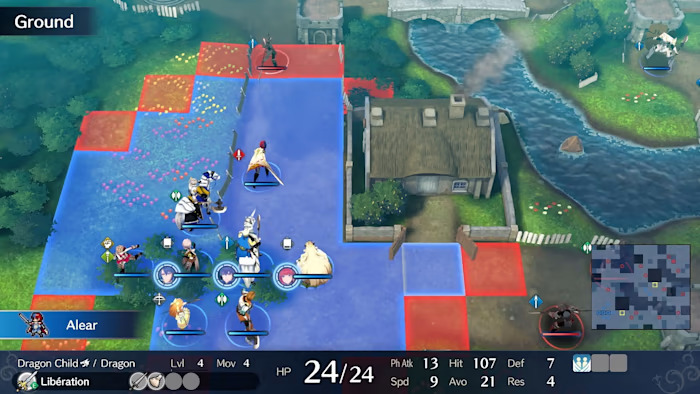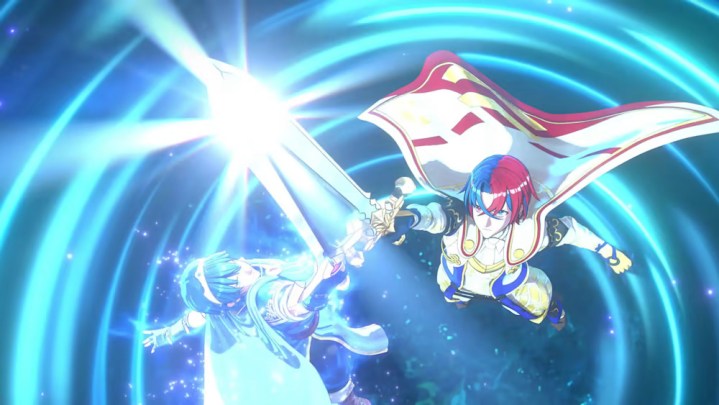Tactics games can be fairly complex thanks to them typically having a higher number of units to manage, level, and outfit. Fire Emblem Engage focuses down more on the combat side of the equation compared to Three Houses, so keeping your team scaling as the game goes on is vital. Instead of just having a linear experience and leveling system like most normal RPGs, Fire Emblem Engage continues the tradition of having a class system, where each unit can level up and change into different classes with different skills, strengths, and weaknesses. With dozens of options between Base, Advanced, and Special classes to pick from, it can be hard to know which ones are best. Let’s run through some of the best options for each type.
Best Alear class

We’ll single out your player character of Alear since they have a pretty definitive best class in Divine Dragon. Exclusive to them, this class’s skill, Divine Spirit, reduces their Engage Meter by one, has an A in Sword proficiency and B in Arts, and high base stats.
Best Base classes

Base classes aren’t ones you will want to stick with long term, but are necessary to work your way up to the higher tiers, and still do have some that are better than others to invest in.
Dragon Child
Alear’s starting class isn’t one you will want to change off of unless you’re really desperate. There’s no other class with better sword stats than this, and the stats are fairly well distributed, with an emphasis on HP and strength most.
Sentinel
There are only two Bow using base classes, and we went with Sentinels as being the better choice of the two. They both have a B ranking with Bows, but the Sentinal’s stats, particularly HP and defense, are far more viable than the Archer’s. Of course, you ideally wouldn’t want your ranged unit taking any hits, but better to be safe than sorry.
Lance Armor
For an early tank, the Lance Armor can do the job well enough. Obviously, they will be using Lances, but their real usefulness comes in very high defense stats. The only flaw with them is their almost non-existant resistance to Magic. If you can play around that, this is a fine unit to throw in the front lines.
Mage
In terms of early Magic units, the Mage is as pure as it gets. Only using Tomes, this unit is going to punch through any enemy with high defense thanks to a great magic stat. However, they are a glass cannon of sorts, so don’t expect them to survive much punishment if you send them out undefended.
Best Advanced classes
Advanced classes are where you will keep most of your units in Fire Emblem Engage. These classes have requirements to switch to, but are orders of magnitude better than any Base level class.
General
Considered one of the best all-around Advanced classes, the General is a tank that any team composition could use. Its primary weapon proficiency is an A with swords, but also has variant proficiencies of A with both the Lance and Axe, making it easy to fit this class onto multiple characters. As you could guess, this class has high HP and defense stats, plus the exclusive Swap skill, which lets you change places with any adjacent ally to tank an incoming hit for them.
Wyvern Knight
An airborne class that is a perfect support unit, the Wyvern Knight’s only drawback is a weakness to ranged and magic attacks. Having a nice balance of HP, strength, and dexterity, the main draw with this class is their ability to cross the battlefield with ease and attack with lances, axes, or swords at B-tier proficiency. Their exclusive skill is Air Raid, which pairs perfectly with this advantage. By starting combat from a tile the opponent cannot move to, this unit will get a +5 buff to their speed during that combat encounter.
Lindwurm
Another flying class, though exclusive to Ivy, this time the Lindwurm is rocking an S rank weapon proficiency with Tomes and a B in Staffs. Unlike most other magic-focused classes, the Lindwurm retains good HP and defense stats. Grasping Void, their exclusive skill, makes it so there’s a percentage chance based on your unit’s dexterity to deal extra damage equal to your target’s magic stat when attacking with a Tome.
Best Special classes

There are only three Special classes, so why not cover them all?
Thief
Despite how you might usually think of using a thief class, this time the Thief actually functions best as a front-line unit similar to a tank. Only instead of absorbing hits, your Thief will draw attacks and dodge them. Of course, the Thief has an S rank proficiency with the Knife and very high dexterity and speed stats. Their exclusive skill is Pass, which allows you to move this unit through other units without having to go around them for easy flanks.
Dancer
The Dancer is somewhat similar to the Thief in terms of having high dexterity and speed but is an A-rank Arts user that is more support-oriented. This is exemplified by the Special Dance skill that targets a unit to buff with +3 to dexterity, speed, and luck for one turn.
Fell Child
This is an exclusive class for Veyle, but perhaps the strongest Mage class in the game. Packing an S tier in Tomes, but also a B with Knives, it has a similar skill as the Divine Dragon, which is fitting since they are both Dragon-type classes. This skill automatically fills this unit’s Engage meter by one each turn.


